🤓 The 2026 Local Search Ranking Factors are here!! Check out the report!
🤓 The 2026 Local Search Ranking Factors are here!! Check out the report!

Earning inclusion in AI-based results has now become a necessary component of local SEO strategies, but we are all still in a learning phase about the nature of these SERP features.
With Google hitching its star to AI Overviews at present, Whitespark set out to discover:
Our goal was to share any findings that will help local business owners and local SEOs feel more familiar with Google’s application of AI Overviews and to better discern, if possible, the types of searches to focus on when seeking inclusion in these results.
Whitespark manually collected data in three large US cities (Houston, Phoenix, and Denver), across 6 industries (plumbers, personal injury lawyers, dentists, optometrists, medical clinics, and real estate agents). We ran a total of 540 queries across these combinations of city + industry, and we were not physically located in any of the geographies in which we searched.
We broke our queries into 3 categories: local intent, informational intent, and hybrid intent.
When this study refers to a “local pack”, we mean the set of local google.com/search results that typically appear near the top of Google’s organic results:
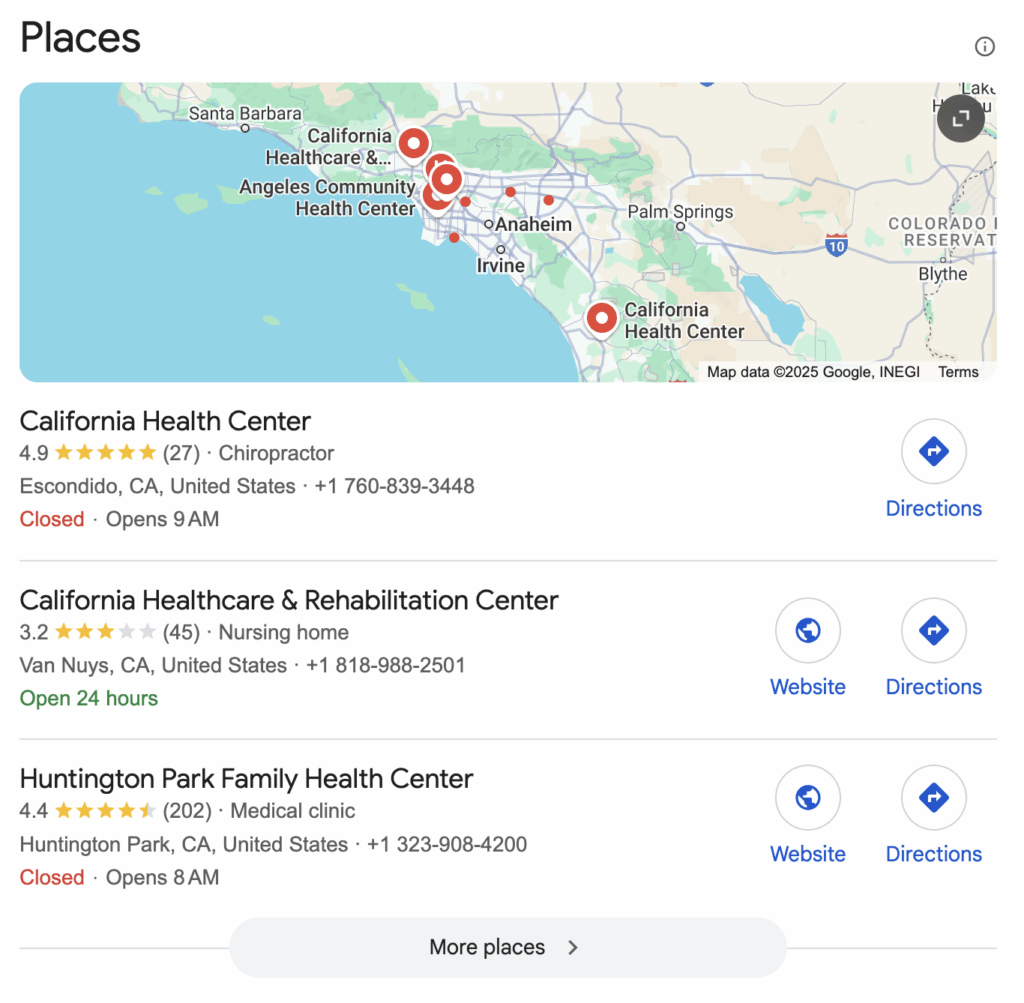
When this study refers to an “AI Overview”, we mean the artificial intelligence-generated results that are now appearing near the top of the organic results for many different searches:
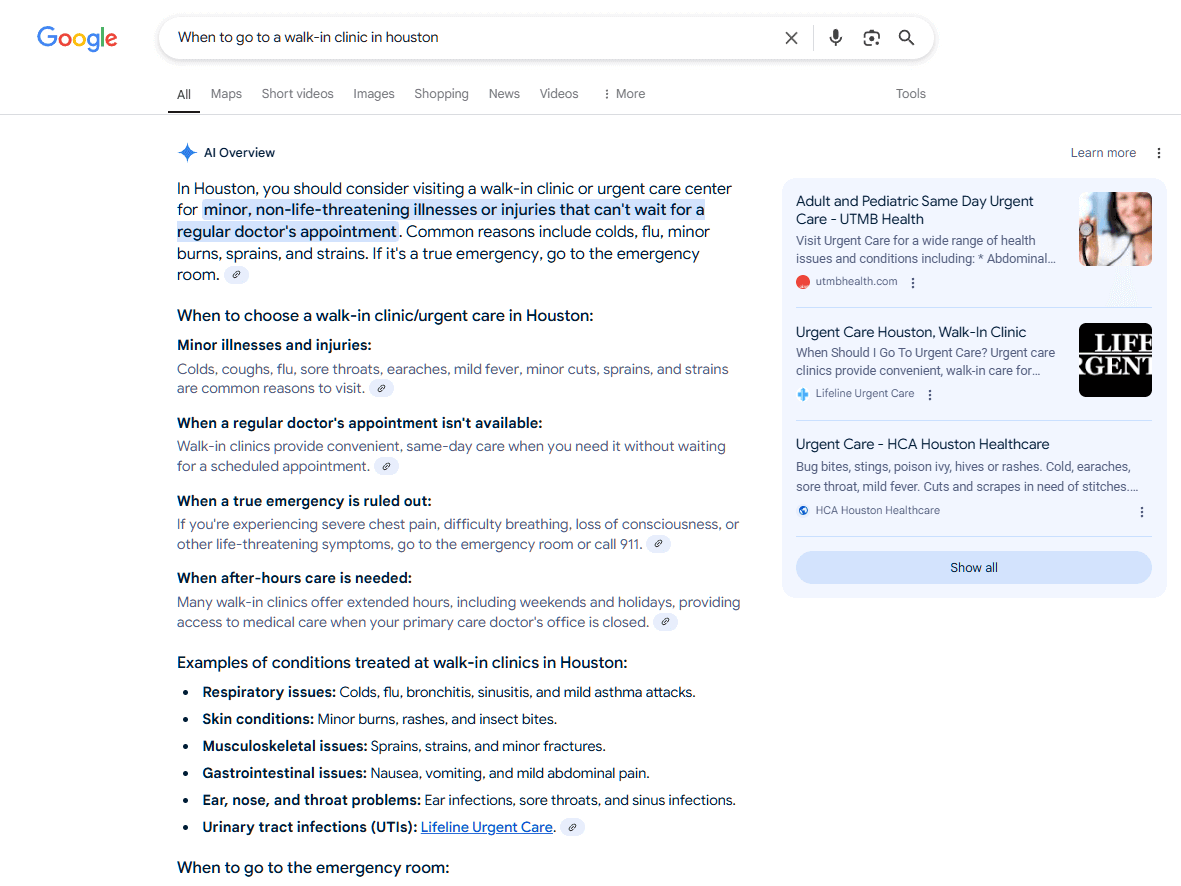
The first field in the following chart signifies the combination of city + industry (e.g. Houston plumbers).
The second field quantifies how often an AI Overview appeared in response to each set of 30 queries for each city + industry combination (e.g. “how to prevent frozen pipes in Denver”, “what causes low water pressure in homes in Phoenix?”, “top rated plumbers in Houston”, etc.).
The third field quantifies how often a local pack appeared in response to our queries.
Numbers have been rounded up to the nearest whole number.
These are our initial takeaways from this data set:
At minimum, Google returned an AI Overview for 57% of our queries, and at maximum, an AI Overview was returned for 80% of queries. This strong degree of prominence suggests that AI Overviews are now deeply embedded in consumers’ local search experiences, highlighting the need for local businesses to gain inclusion in these results as much as possible.
A good statistic you can share with your teams and clients is that, on average, AI Overviews are currently appearing in 68% of local business-type queries. This is a significant number which reveals the extraordinary degree to which Google has been willing to alter its SERPs to include AI-generated content.

Regardless of city, there is a notable degree of sameness in the percentage of AI Overviews being returned for each given industry. One can almost picture a dial being set in the inner workings of Google, which designates that about 70% of legal queries will receive AI Overviews, for example.
The prominence will vary for your specific industry, but an initial takeaway you can share with your teams and your clients who are marketing multi-location chains and franchises is that AI Overviews are likely to have the same prevalence across multiple metropolitan geographic markets. These figures could, of course, vary for smaller towns.
While AI Overviews were returned for an average 68% of our queries, only an average of 39% returned a local pack result.
We strove to vary query intent into 3 categories: local, informational, and hybrid for each industry + city combo. The nature of our queries certainly impacted the degree to which we saw local packs appear, as we will explore further in the next section of this report, but the basic takeaway for you here is that our research suggests that your potential customers may be encountering more AI Overviews than local pack results, depending on query language.
At least in our limited data set, we could discern no reliable correlation between the degree to which local packs appear and the degree to which AI Overviews appear.
For example, we do not see any pattern of a greater or lesser prominence of AI Overviews being tied to a greater or lesser prominence of local pack results. Perhaps a pattern would become clear if many thousands of queries could be investigated.
Now we will investigate any discernible patterns causing either AI Overviews or local packs to be returned as results based on searcher intent.
For this section of our study, we broke queries down into 3 intent categories: local, information, and hybrid:
The first column in the following chart represents the city + industry combo. The second field designates whether the query is local, informational, or hybrid. The third field designates the percentage of these queries for which AI Overviews were returned as results, and the fourth field reveals the same, but for local pack results.
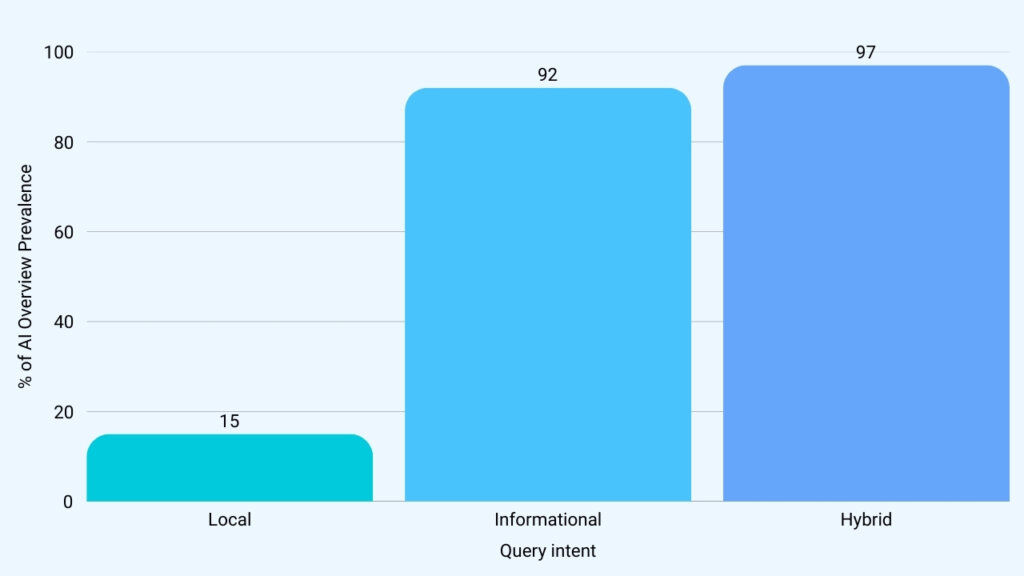
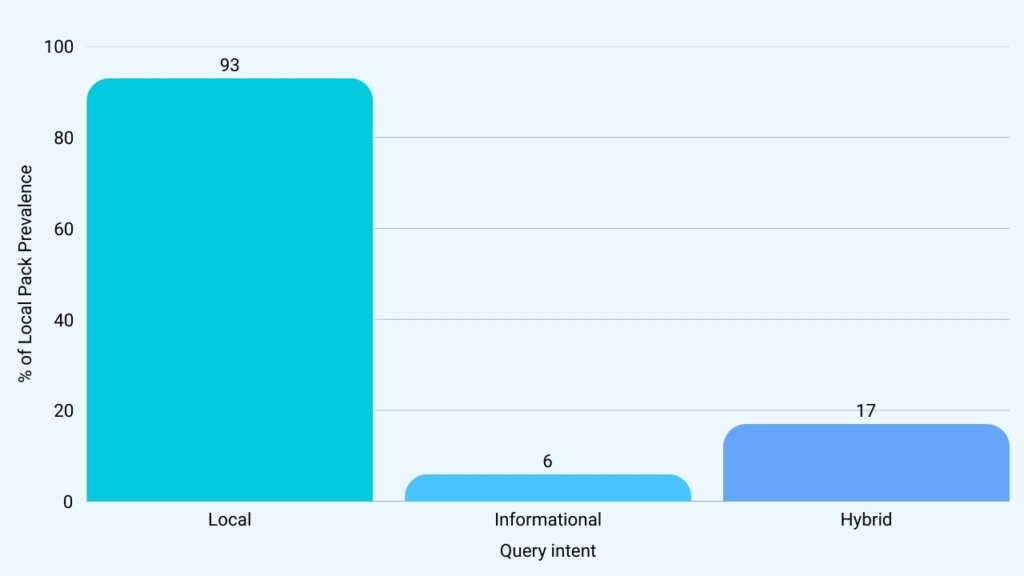
These are our initial takeaways from this data set:
Where local packs are most prominent, AI Overviews are least prominent, and vice versa. While there is some degree of overlap, the takeaway here for your business or team is that full visibility for searches with different intents may require a multidisciplinary approach that includes both Google Business Profile rankings signals and the PR and SEO efforts that influence AI Overview inclusion.
It comes as no surprise that, more than 90% of the time, traditional local queries like primary care clinic Phoenix or vision care center in Denver return local pack results. AI Overviews have made a 15% inroad into this space. While this number is small compared to the figure for local packs, it is still significant when extrapolated across millions or billions of traditional local searches.
If this pattern of local pack dominance for local queries holds true in your industry, then a study of Google Business Profile local search ranking factors will be your best ally in achieving maximum visibility in this environment.
With a presence in 92% of results being returned for informational queries like how long does an eye exam take in Phoenix or can I switch lawyers during a case in Denver, it’s clear that Google views their AI feature as an answer engine. Meanwhile, they see local packs as an appropriate answer for a meager 6% of these longer-tail queries.
If you can replicate this Google behavior in your own industry, then I recommend watching this Linkedin video from Rand Fishkin on what we know influences AI Overview inclusion – namely, the proximity of your brand name to target phrases.
It is a stunning takeaway that AI Overviews are now being shown for nearly all hybrid-intent queries we investigated (97%)! Examples of hybrid queries like cost of hiring a personal injury lawyer in Houston and average cost of dental implants in Phoenix combine both a need for information + a strong local transactional intent. This suggests that Google is confident that its AI Overview product is an appropriate guide when money is on the line.
Meanwhile, local packs make a slightly stronger showing here at 17%, but this pales in comparison to the prevalence of AI Overviews. Depending on whether this pattern holds true in your own industry, a combination of both GBP and AI visibility factors may need to come into play to achieve full coverage for valuable hybrid-intent queries.
In even a modest-sized study like ours, real estate agents emerged as an outlier. AI Overviews are appearing for as much as 50% of local-intent queries in this vertical. Differences like this emphasize the need for local business owners and digital marketing agencies to be doing their own research into their own categories to discover their unique ratios.
💡 Would you like to do a deeper dive into AI Overview behavior?
Make a copy of our spreadsheet here for full access to our data. This spreadsheet will help you:
– take a more detailed look at all the different industries we surveyed
– create your own spreadsheet for your own industry
One aspect I would suggest you discover is the ratio of business-to-third-party citations in AI Overviews. For example, here is the set of 9 hybrid-intent searches we ran for plumbers in Houston (the 10th question didn’t generate an AIO):
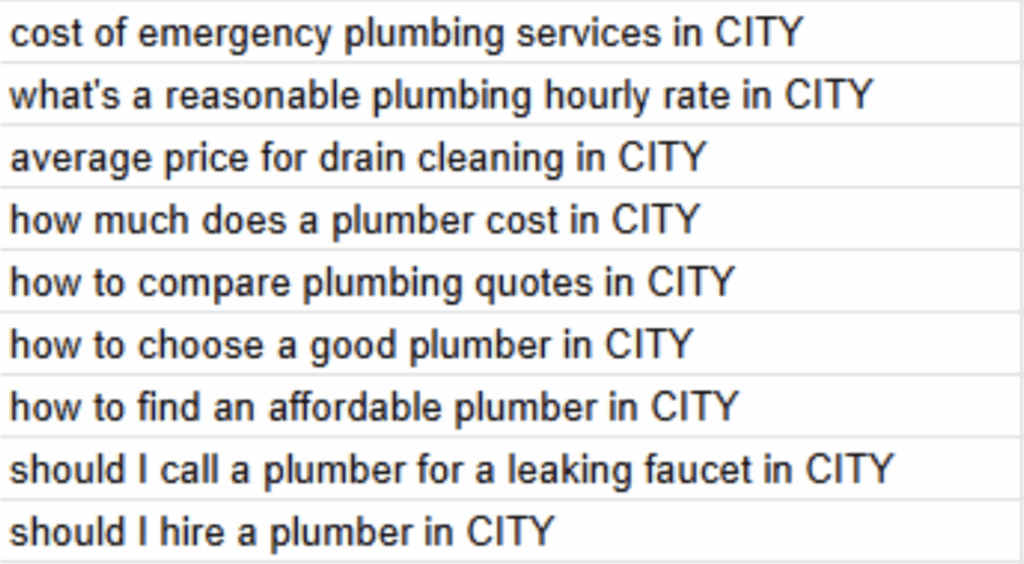
For this data set, AIO cited a total of 23 sources for the information they generated in the prominent right column:
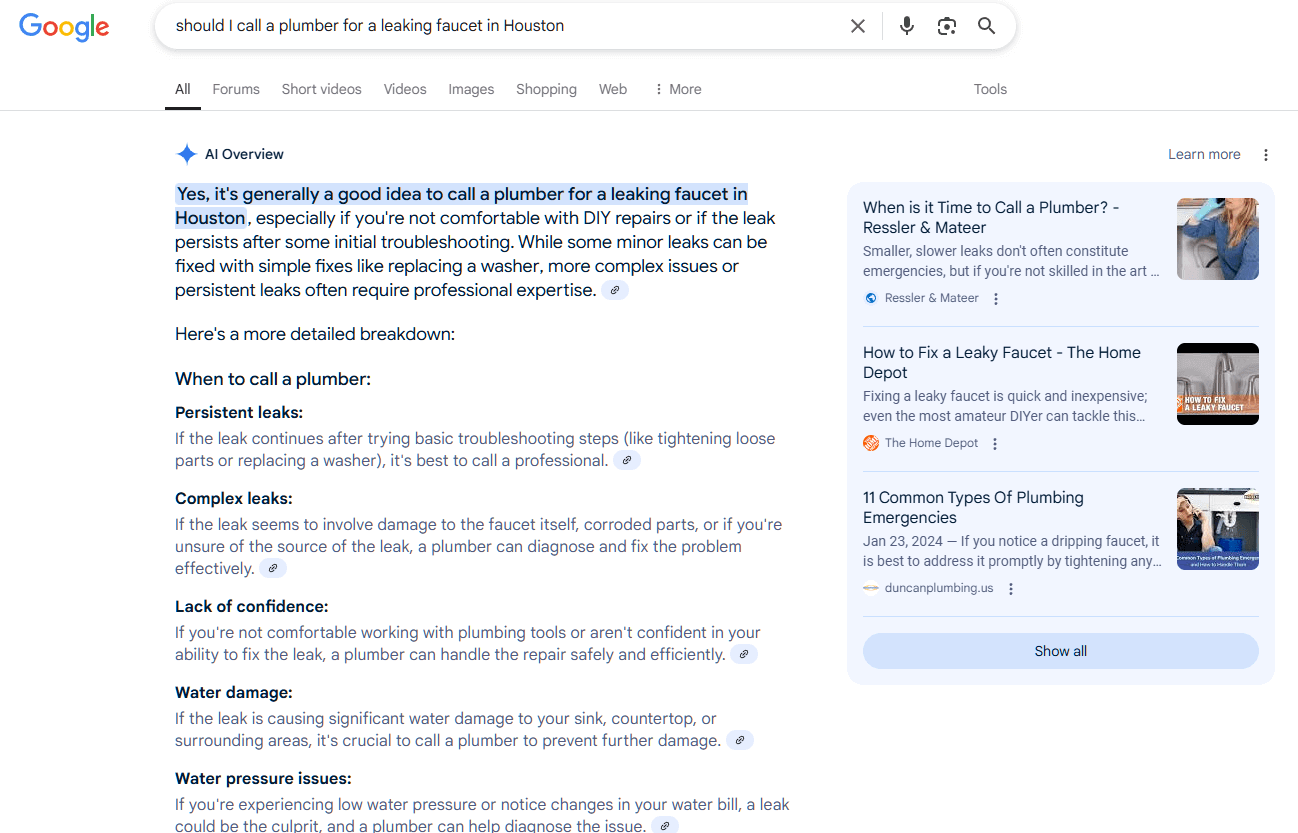
The ratio we discovered in this data set is that 60% of the AI citations pointed to third party publishers, including sites like Indeed, Reddit, Quora, ZipRecruiter, HomeGuide, Thumbtack, and Yelp. The remaining 40% cited individual local businesses. Knowing the ratio in your market will be useful in helping you budget X amount of resources toward getting included on third-party publishers vs. X amount on promoting your own brand authority. It looks like piggybacking is still going to be “a thing” in the AI scenario.

In addition to finding your ratio, you should investigate the types of information the AIO is generating for specific queries. As you can see in the above screenshot, the AI thinks an appropriate answer to a particular question involves content describing safety, expertise, work quality, warranties, and more. Treat these elements as clues to what a business you’re marketing needs to become known for (and use SEO and PR to develop a reputation for) in order to be considered an appropriate AIO citation source.
💡 Citations are back in style!
Our Listings Service can help you get the citations you need to rank in Google’s AI Overviews!
My childhood is indelibly imprinted with Mercer Meyer’s illustration of the Typhoonigator in his aptly-named book, One Monster After Another. This creature that vacuums up everything in the world is a useful mental image to bring to bear in discussing the impacts of Google’s new favorite feature on click-through rates. Ahrefs’ recent study of 300,000 keywords finds that CTR drops by an average of 34.5% when AI Overview is present. That’s more than a third of your valuable, direct user engagement sucked away.
How big of a problem is this? Local SEOs will typically observe that, so long as calls and sales are still occurring at the same rate, local businesses don’t really need to care about how they happen. There’s truth in that, certainly. But I have lots of questions about this new dynamic in the SERPs, and perhaps you’re also wondering:
I don’t have answers to these questions yet, but your team should be fielding Q&A like this to try to gauge what AI is actually doing to the local businesses you market.
Most of the AI features and products I’ve seen being most expensively marketed are unified by their presentation as something “fun”. For example, no one actually needs to remove people and objects from personal photos as a life necessity, but a universe of money is being spent to promote the idea that it’s fun for people to spend their leisure time engaged in this pursuit. There’s a prevailing marketing message that busy and hip people adore how AI is making life like one big game they can play.
However this message may be resonating with you personally, if you market local businesses for a living, you probably have some grey hairs from how Google has historically treated this particular environment as a plaything. Local businesses aren’t a simulation of real life – they are real life, and represent livelihoods and vital resources for actual communities. When Google has messed up their local search results in the past, it’s had disastrous impacts on real people.
Given the unreliability of any AI-driven feature, your team should be discussing commentary like this post from Lily Ray about AIO hallucinations, which states:
“These types of viral incidents and errors raise questions about how much AIO answers can truly be trusted. How is the user supposed to know when it’s hallucinating? How will they know when it’s mixing up words in a sentence and producing inaccurate information? Does labeling these answers as “experimental” really absolve Google of all responsibility? AIOs are being rolled out rapidly and globally, yet many of these issues remain unresolved.”
When it comes to local search, Google has too often treated the local businesses that make up their index as if we’re playing the game of Life instead of actually conducting real life. AI Overviews have taken this unreality to another level, and my best advice is to do everything you can to be directly available to your customers so that they come to you for answers instead of relying on “fun”, “experimental” SERP features that may tell them utter nonsense. Unfortunately, however, to some degree, you will have to ante into Google’s game, given the findings of research like ours.
The AI Overview scenario may not be permanent. Over the past two decades, we’ve learned that most SERP features have a shelf life. Google continuously rolls out products that it later dials back or completely sunsets.
Whether you love AI Overviews or wish they would just go away, never lose sight of the yo-yo behavior of the SERPs. Because things come and go, no local business should ever tie too much of its fate to any one Google product. The SERPs of today won’t be the SERPs of tomorrow.
Right now, it’s probably necessary for local businesses to take an experimental and investigative approach to becoming visible in AI Overviews, particularly for informational and hybrid queries. All I ask is that you don’t bet the house on it. Keep focusing on your full spectrum of brand-consumer communications options, including those that cut out online interpolators entirely via the creation of exceptional real-world customer experiences.
Today, you’ve learned that:
We hope this study has proved useful and that you will share it at upcoming client and team meetings. As a bonus, we have compiled a short checklist to aid you in your local SEO work as it pertains to AI Overviews:
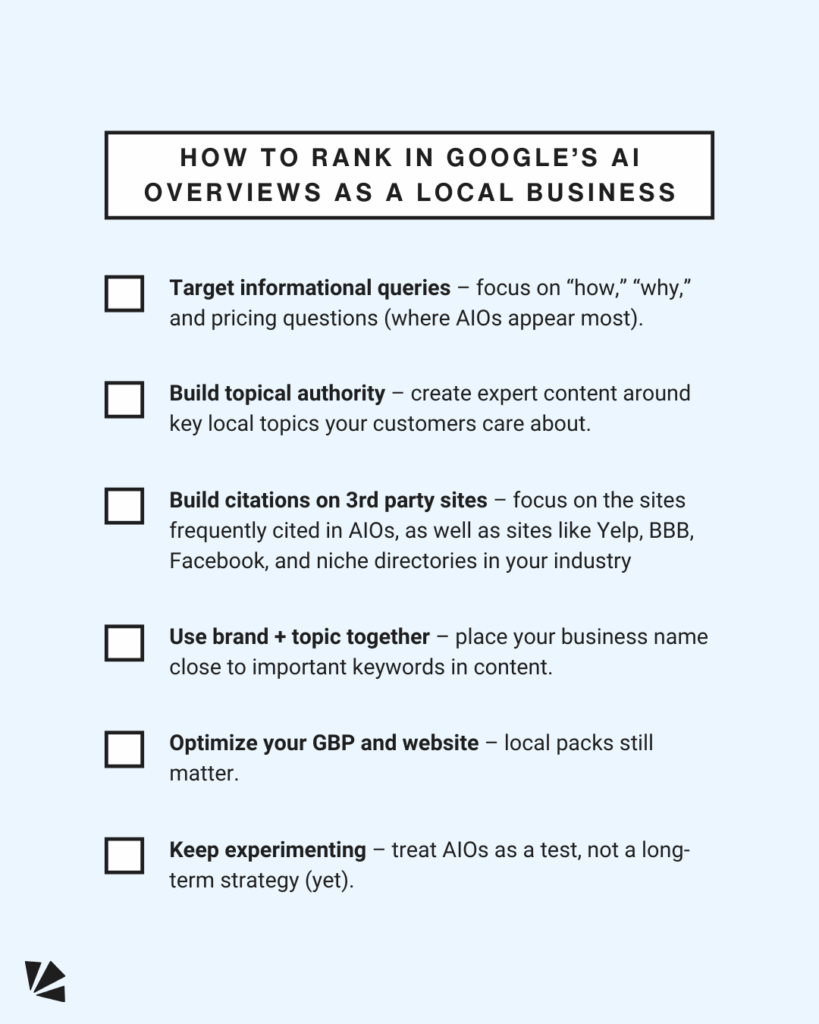
Let’s keep learning together how best to navigate both the significant pitfalls and opportunities of local business marketing in Google’s rewarding environment!
Miriam Ellis is a local SEO columnist and consultant. She has been cited as one of the top five most prolific women writers in the SEO industry. Miriam is also an award-winning fine artist and her work can be seen at MiriamEllis.com.
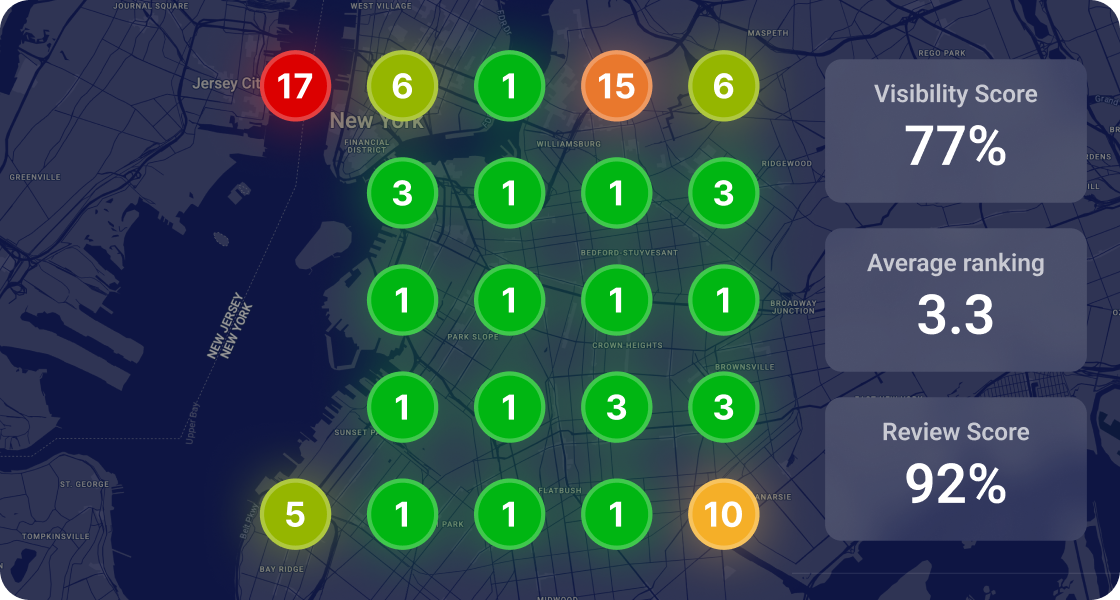

Whitespark provides powerful software and expert services to help businesses and agencies drive more leads through local search.
Founded in 2005 in Edmonton, Alberta, Canada, we initially offered web design and SEO services to local businesses. While we still work closely with many clients locally, we have successfully grown over the past 20 years to support over 100,000 enterprises, agencies, and small businesses globally with our cutting-edge software and services.